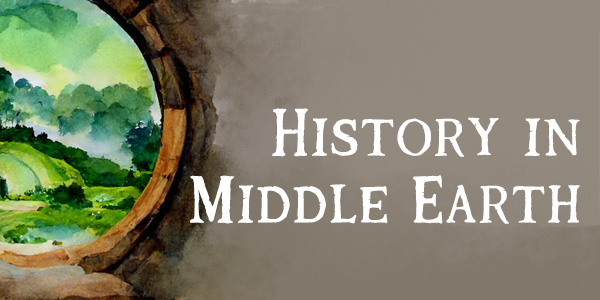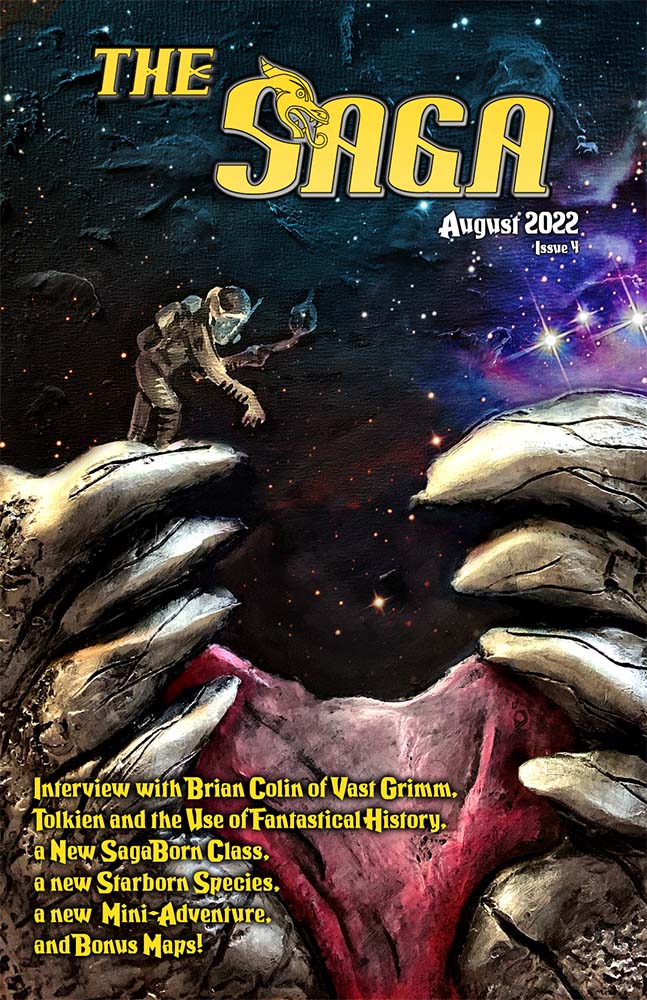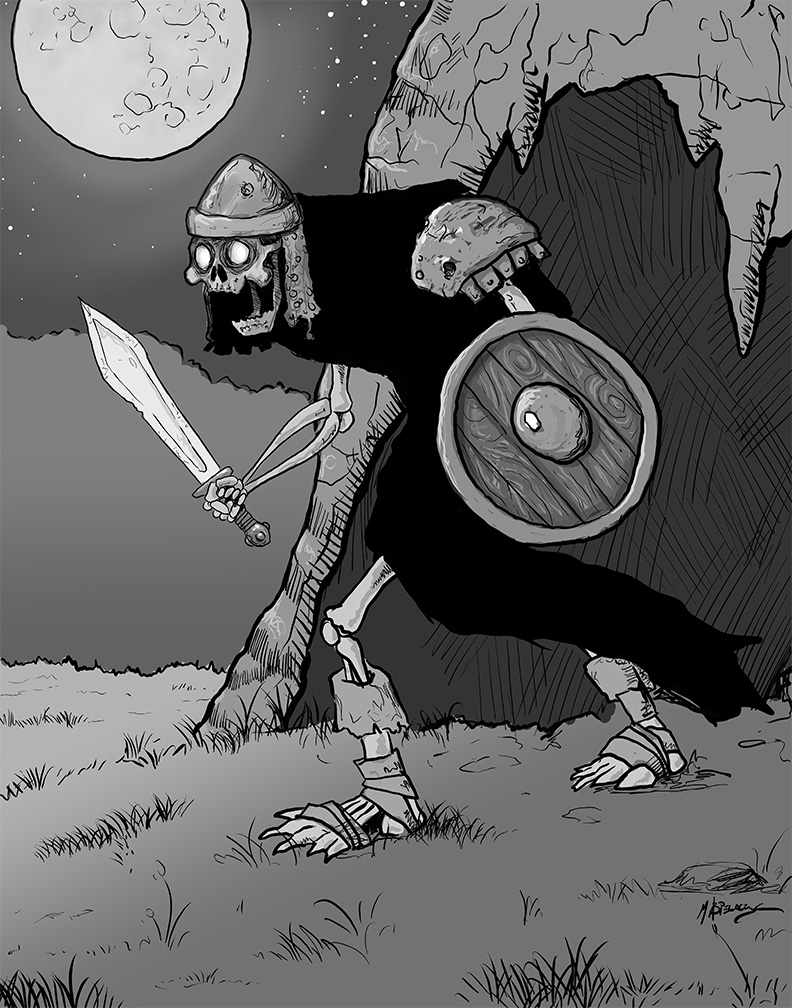

When building a fantasy world, one of the most important steps is building a history for that world to exist in. History builds the world in a believable way, so that our stories don’t seem like we just pulled the story elements out of a fantasy magic hat.
(Pulls out magic fantasy writing hat and draws ad libs) Frodo will be beset by “giant spiders”, in his quest to “find a magic wand”, to destroy the “dark lord” who is bent on finding and killing him.
When I was young I fell in love with many books, but the ones with a deep sense of history are the ones I kept coming back to. Foundation by Asimov, Dune by Herbert, and of course Lord of the Rings by Tolkien. I used to also include Star Wars in that list, but that is another story.
Of them all, Lord of the Rings rang the most true in my heart. There was always something deeper to learn about the lore behind the simple premise of – here’s a bad ring, now go throw it in that fiery hole. In fact, if it weren’t for the history and layers, the story would be just a bunch of walking and then a ring toss into a volcano. And while that may be a fun vacation, it is not the mythic story that Tolkien was telling.
For those who only saw the movies, there were still plenty of references to the deeper lore, but not half as many as the books provided. The history of Middle Earth is wrapped in almost every facet of Frodo’s journey, reflecting the mythic quality of the story. It also illustrates a theme of Tolkien’s work, a slow fading of the world. First let’s examine a couple of examples of the complex history of seemingly simple magic items.
The Blades of the Barrows

When the hobbits become trapped in the barrow-downs, it seems like a simple ghost story. They are separated and captured by a wight, an undead creature haunting the graves. Frodo resists the spell of the wight enough to call for Tom Bombadil, who rushes to rescue them from the dark tomb. Once rescued, the hobbits each get a blade from the barrow, found in the treasure inside by Tom Bombadil.
The Barrow-downs add to the dangers lurking in Middle Earth for the story, especially so close to the Shire! But there is so much more that the barrows are and Tolkien is setting up a future for those blades. The Barrow-downs were a string of hills located east of the Shire and west of Bree. They were made by the men in the North and used for ages to bury and honor the dead. They were cursed by the Witch-king of Angmar, who sent the evil wights to haunt the hills and stop the Dúnedain from resettling in the area. The grave in which the four hobbits found themselves was probably that of the last prince of Cardolan. The prince fell fighting the armies of Carn Dûm, the stronghold of the Witch-king. The long battle between the men of the north and the Witch-king meant that they did everything in their power to push back this evil, even enchanting their weapons against the dark morgul magic of Angmar and its armies. So this meant that the daggers Tom gave the hobbits were forged specifically to fight against the Witch-king and his followers.
This immediately aids the hobbits when they are beset by the Nazgul on Weathertop, with Frodo stabbing the foot of the Witch-king before Aragorn chases them off. But it also has a much bigger impact two books later, at the Battle of the Pelennor fields. When Eowyn bravely stood against the Witch-king, Merry stabbed him in the back of the knee with the enchanted Barrow-blade. After this blow, Eowyn “drove her sword between crown and mantle” and the Witch-king fell. Tolkien made sure readers knew of the importance of the strike from Merry, telling this of the Barrow-blade:
“So passed the sword of the Barrow-downs, work of Westernesse. But glad would he have been to know its fate who wrought it slowly long ago in the North-kingdom when the Dúnedain were young, and chief among their foes was the dread realm of Angmar and its sorcerer king. No other blade, not though mightier hands had wielded it, would have dealt that foe a wound so bitter, cleaving the undead flesh, breaking the spell that knit his unseen sinews to his will.”
In Tolkien’s writing, even a few daggers picked up in a grave are imbued with long history and then given power within the story due to that history.
The Phial of Galadriel
There is no magic item besides the One Ring that seems so mundane, but grants such great power than the Phial of Galadriel. Given to Frodo as the Fellowship leaves Lothlorian, it is a glass phial which contains water from her fountain, which has captured the light of Eärendil’s star. Eärendil’s star is, according to the mythology of the elves, Eärendil himself, riding his glowing ship among the stars. He wears a Silmaril upon his brow, which is in itself a bit of captured light from the Two Trees which illuminated Valinor before Morgoth (named Melkor then) and Ungoliant destroyed them. So Frodo is given the Phial which is a captured reflection of a Simiril, which is a gem that was a captured reflection of the light of the Trees, which gave light to Vailnor before it was destroyed by Sauron’s mentor and a gargantuan spider. When heading into Mordor, this may seem like handing someone a dim flashlight and patting them on the back, but as always with Tolkien, history grants artifacts heavy powers.
“And you, Ring-bearer,’ she said, turning to Frodo. ‘I come to you last who are not last in my thoughts. For you I have prepared this.’ She held up a small crystal phial: it glittered as she moved it, and rays of white light sprang from her hand. ‘In this phial,’ she said, ‘is caught the light of Eärendil’s star, set amid the waters of my fountain. It will shine still brighter when night is about you. May it be a light to you in dark places, when all other lights go out.” Fellowship of the Ring, “Farewell to Lórien”
Almost like the Barrow-blades, this artifact stays unused until the last book, when Frodo and Samwise enter Mordor. Once the Phial is used, its light and power is revealed, as is the wisdom of Galadriel for giving it to the hobbits.
At first the phial is used as a comfort when Frodo enters Mordor, his hand straying to the ring, but instead finding the phial. This brought comfort and strength in a dark moment. The phial was also used against Shelob, its light chasing her away. When Sam faces Shelob, he wields the phial and calls to Galadriel. The phial opens up a power in him, even calling out in a tongue he does not know:
Gilthoniel A Elbereth!
Samwise Gamgee, The Return of the King
And then his tongue was loosed and his voice cried in a language
which he did not know:
A Elbereth Gilthoniel
o menel palan-diriel,
le nallon sı´ di’nguruthos!
A tiro nin, Fanuilos!
As with many times an artifact is used, the names of the Valar are invoked. Tolkien gives no explanation for this, but even these small references add to the depth of the story and history. While the phial gives Sam power to come back to himself, his indomitable spirit powers the phial to reveal its full strength, lighting up like a star in the darkness.
No such terror out of heaven had ever burned in Shelob’s face
before. The beams of it entered into her wounded head and scored
it with unbearable pain, and the dreadful infection of light spread
from eye to eye. She fell back beating the air with her forelegs, her
sight blasted by inner lightnings, her mind in agony. Then turning
her maimed head away, she rolled aside and began to crawl, claw by
claw, towards the opening in the dark cliff behind.
The phial was used twice to pass the Two Watchers, guardians of the gates of Cirith Ungol. Sam used it to spring past them on the way in to rescue Frodo, and as the hobbits escaped, the phial once again blazed with brilliant light to allow them past the gates.
The phial was only diminished when Sam tried to use it in the Cracks of Doom, the power of Sauron overwhelming its protection.
All of this shows how Tolkien used what could be considered a small magical trinket to not only progress the story, but to give hints of the history of Middle Earth and build a mythology for the reader.
The Lord of the Rings
The importance and history of Sauron can not be downplayed seeing that Tolkien decided to name the whole series after the main antagonist. Sauron is a complex and compelling villain, more than just an evil eye who gathers orcs and tries to greedily find his all-powerful ring. He started out like many villains, if not a little more powerful than most. He was a Maia, an angelic being sung into existence by Eru Ilúvatar to aid the Valar in the creation of Arda (the world / Middle Earth). He was a student of Aule, the great Valar smith. As he learned the art of creation, his own personality was wrought. Sauron, called Mairon then, being a great craftsman, sought perfection and order. These two themes follow him throughout his journey in Middle Earth.
These desires led him to align with Melkor (soon to be renamed Morgoth), who offered to help him in his goal of finding perfection. Sauron desired power to dominate the people and creatures of Arda, though he believed this was for their benefit. When Morgoth built his strongholds in Middle Earth, Sauron declared his loyalty and became an enemy of the Valar.
As with most important things in Tolkien’s writing, the long history of twists and turns for Sauron lead through the ages, but I want to touch on the most important aspects we see in the main trilogy. Sauron’s lust for power and perfection, along with his lack of empathy toward others, is what caused his downfall. Sauron had created the One Ring, a Ring to rule them all. And in his mind perfection. A way to bring his dominion and order over all of Middle Earth. Often, villains in stories are given no greater depth than the want for power. But Tolkien not only gave him a reason for the longing for that power, but also wove those shortcomings into Sauron’s fall.
Sauron could not fathom anyone wanting to destroy the Ring, for how could anyone deny a talisman that was both powerful and perfect? Readers wondered how Sauron could not catch the hobbits sneaking into his own land to toss the ring into the fires of his own forge. It was because Tolkien saw the flaws of Sauron all too clearly: the powerful almost always seek more power. And they often lack the empathy to see others’ points of view.
Gandalf saw this as well, and often used distractions to turn Sauron’s gaze away from the pair of small hobbits, hopefully making their way slowly but surely to the Crack of Doom. Gandalf used Aragorn, descendant of Isildur, who once defeated Sauron, to spite Sauron’s sense of pride. He flaunted a halfling in front of the gates of Mordor, itself, teasing Sauron that surely one of these must have his most valued Ring. And because of this, the Ring was destroyed, and true evil was banished from Middle Earth.
Tolkien uses Sauron’s history to create a compelling villain, even when we never see him or his motivations in person. A grand history is an irreplaceable part of any character or any story, especially a fantasy or sci fi story, where the readers must believe in the world you are presenting.

